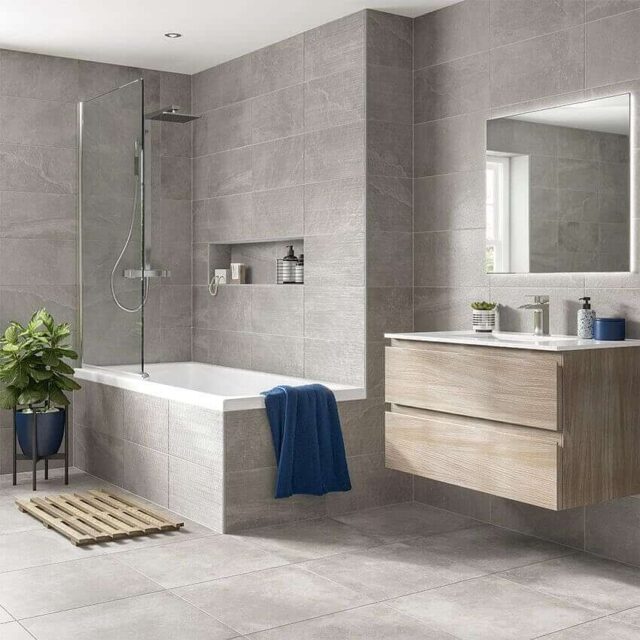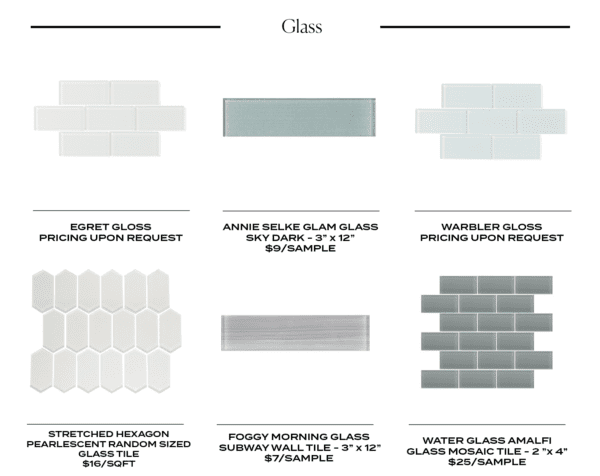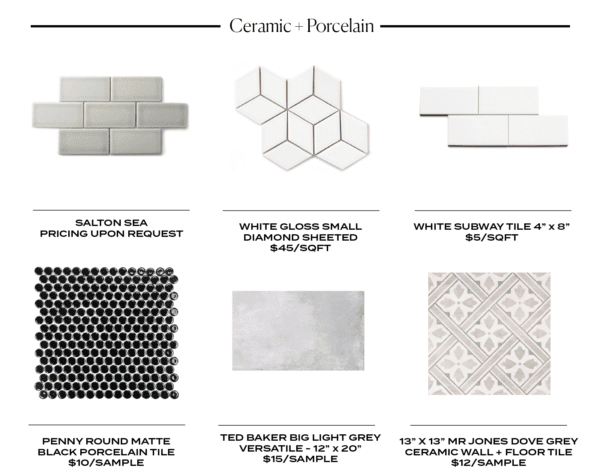Tile selection is a process that has been around for centuries, but now with the advent of advanced technology, it has become more complicated. The best tile selection comes from understanding what you want and why you want it.
Ceramic tile flooring is a popular choice for many homeowners. With its durability, easy installation, and beautiful appearance, it’s no wonder ceramic tile is the top choice in the industry.
I’ve always had a great respect for beautiful, carefully placed tile, as devoted longstanding readers will testify. Simple improvements like a subway tiled bar backsplash or penny tiled bathroom flooring have a significant effect on a room’s overall appearance as well as utility. Choosing tile purely on the basis of aesthetics may have unintended implications in the long term, as I have learned myself.
As we said farewell to our kitchen’s cement tile, I felt it would be a good opportunity to educate myself on what to think about, what to anticipate, and where to place the various tiles available. Installing a tile stone wall in a bathroom, for example, may seem to be very attractive, but the high amount of moisture may lead to mold growth. Cement tile has a texture and depth that no other tile can equal, but if you want it to appear “fresh” when it patinas, you’ll have to fight an uphill battle.
The point is that choosing tile is a choice that involves both aesthetics and utility, and it may often pit our own preferences against what is best for the area. After putting the WRONG tile (that I still adore) in the WRONG location, I recommend approaching this choice rationally and considering the “where” and “what for” of tile installation before deciding on color schemes and textures. It’s the greatest advise anybody could ever offer you: don’t make any decisions hastily.
The rest of the criteria will fall into place much more easily after you’ve worked out the logistics (tile purpose and placement). “There are a million options of paint to choose from, but only a limited number of tiles,” Jim McDonald told me just last night. And an even smaller number of items that are currently in stock and ready to ship.”
To help you started, I’ve included a list of the most essential factors to think about while shopping for tile. I hope this information is useful to all of you tile enthusiasts out there!
When looking for tile, there are a few things to keep in mind
Durability: Selecting a material that can resist wear and tear and last for many years is critical. Not all materials are long-lasting. The stone will stain and patina if it is natural. Marble is prone to chipping. All of these are fundamental facts to consider when determining what works in your environment.
The space in which you want to put the tile may help you limit down your choices. The walls in the bathroom and kitchen must be made of a waterproof material such as ceramic or glass. You may, however, use stone tiles that perform well in high-moisture environments. Because floors will be subjected to foot traffic, more durable materials are recommended, such as ceramic or porcelain.
Because there are fewer apparent grout lines to break up the pattern, big floor tiles may make a space seem larger. Small tiles, on the other hand, may be used as a backsplash or on the floor of a small area. In ancient houses, I like smaller tiles because they seem more natural in areas with character and patina.
Style: Textured or matte tiles are less slippery than smooth or glossy tiles, which is essential to remember when placing floor tiles in bathrooms, kitchens, or other places where moisture is a concern. Texture, I’ve just discovered, may also have aesthetic value. A “rough cut” tile, for example, that replicates patterns and textures, adds flair to any space! With the addition of contrasting grout, you’ve created a visually beautiful appearance that doesn’t compete with the rest of the room’s decor.
Tile Grouts: A grout color that is similar to the tile color will make the grout virtually invisible, resulting in a compact tile installation, while a contrasting color will make individual tiles shine. It depends entirely on the impression you want to achieve and the tile model you choose. Consider grout as a design feature rather than a spur-of-the-moment choice! With the proper grout, you can create a beautiful design.

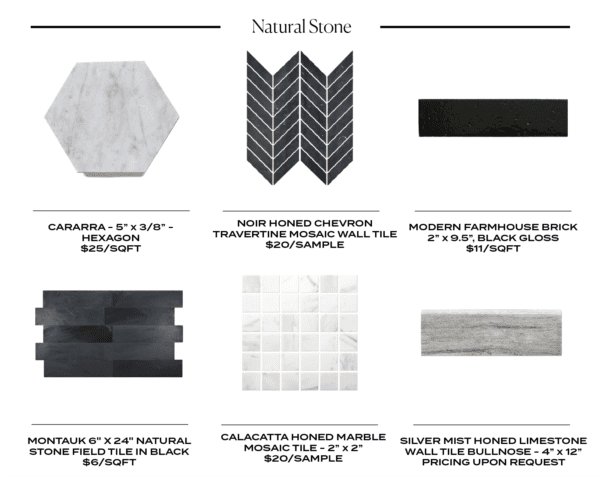
1 / 2 / 3 / 4 / 5 / 6 / 7 / 8 / 9 / 10 / 11 / 12 / 13 / 14 / 15 / 16 / 17 / 18
Natural stone is one of the most difficult stones to clean since it has larger pores that may gather dirt and filth.
Although certain natural stones, such as marble, are softer and more absorbent than most tiles, they are nevertheless durable enough for a range of uses. Backsplashes, flooring, cooking surfaces, tub surrounds, and vanity tops are all good choices for marble. To absorb stains, use a poultice (available at flooring shops). Sealing is a possibility, however certain sealants have the potential to discolor white parts, so test in a small area first.
Consider slate flooring, especially darker tones that are less likely to stain, if you want a rustic or industrial appearance. With just a little polish, the finish tends to appear natural. I like the appearance of slate when it’s combined with light, natural woods!!
When used in the right setting, glass tile may be really beautiful. Glass tile, in my opinion, is like adding a little jewelry or visual flair to your room. They’re a fantastic opportunity to be creative with your design and show off your own flair. “Glass mosaic tile is more than just a beautiful face,” according to This Old House.
It provides an impermeable surface that prevents mold, mildew, and bacteria in terms of performance, livability, and hygiene. More good news: as demand and advancements in production have increased the number of style choices, prices have decreased.”
Drawback? Water stains are common on glass surfaces.
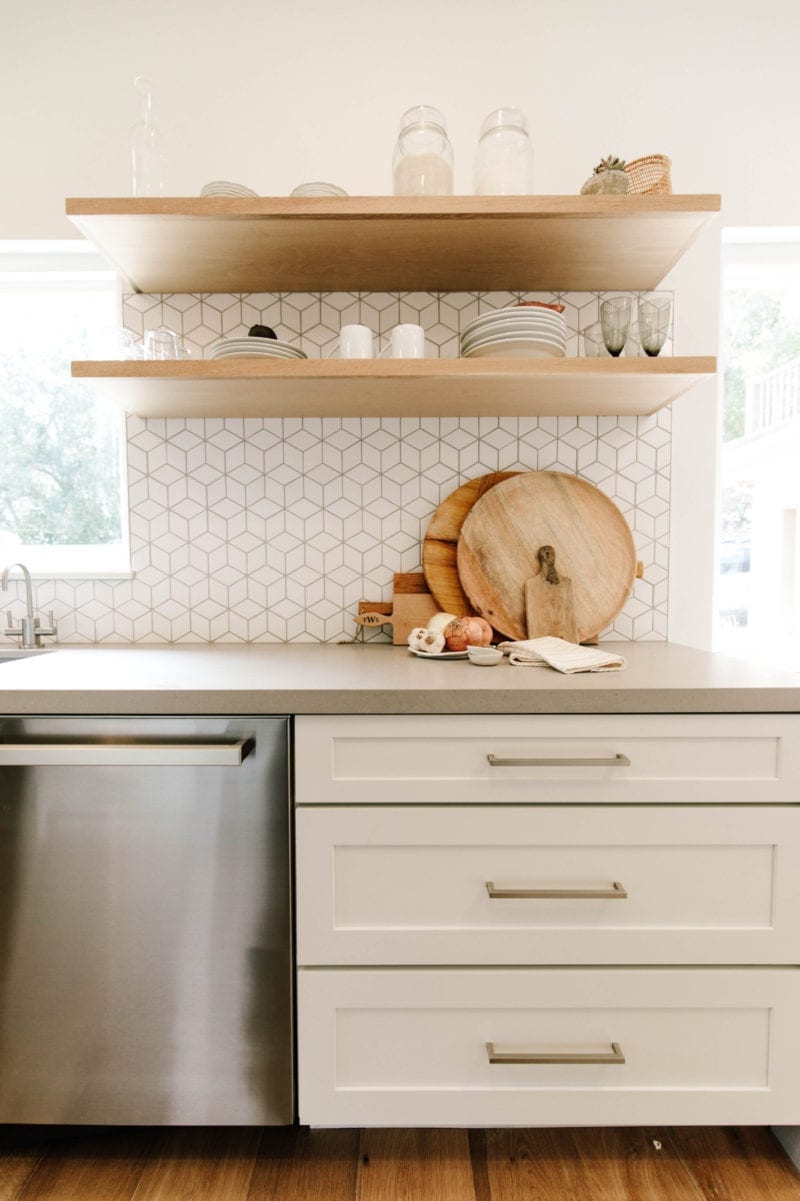
Cleaning ceramic and porcelain is a breeze. We like to keep things low-maintenance because of how we live in our home. From a design perspective, there are many advantages to using this material since it closely resembles conventional flooring materials such as marble, granite, wood, and steel
As a result, you get something that seems genuine yet doesn’t need any maintenance. I also like that they are long-lasting, liquid-resistant, stain-resistant, and fireproof. This is the first area you should check if you want your tile to appear fresh after years of heavy use. Don’t bother with the rest of the stuff!
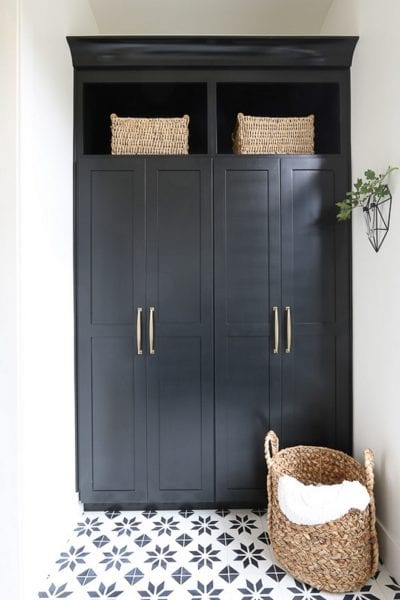
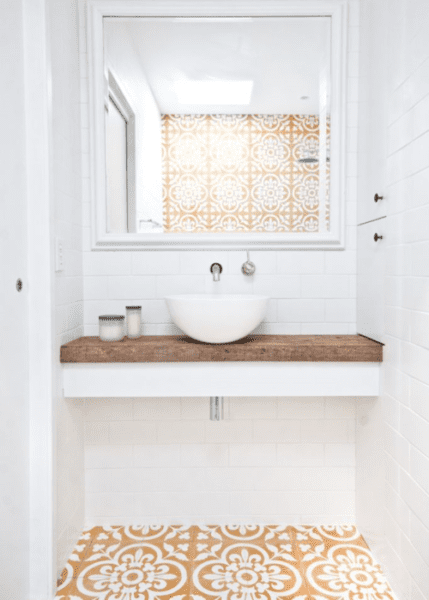
Now. Because of the well-known cement tile. Before the cement tile craze swept the internet, much to the chagrin of tile installers and builders worldwide, I planned our kitchen. Slowly, I believe many of us recognized how ill-advised our selections were in terms of WHERE this flooring should be installed. The removal of my cement tile, in fact, sparked this investigation (and this post!).
Given that our kitchen has been pinned almost a million times, I believe it is my responsibility to share what I’ve learned. Encaustic tile has two drawbacks: it’s costly to purchase and install, and it stains during the first hour of usage. “Ceramic tile typically has a coating of glaze on top and is impermeable after being burned at a high temperature in a kiln,” the New York Times noted in a wonderful piece about the issue with this trend (I’M SO SORRY).
The colorful coating on top of cement tile, which is typically approximately an eighth of an inch thick and cured at room temperature rather than burned, is porous.” If it’s good enough for Europe’s centuries-old structures, I figured it’d be good enough for me! But they didn’t account for the fact that my spouse is a clean freak, and the patina was driving him insane.
And, as much pleasure as our tiling gave me on a daily basis (and it did), it’s more important to me that Joe is as pleased with our home’s design choices as I am. It was an EXPENSIVE blunder. It’s a difficult pill to swallow. And tile removal isn’t in everyone’s budget.
Please, please, please! If you’re thinking about using encaustic tile, ask yourself these questions:
One: Is a patina going to annoy me? This tile isn’t for you if you answered yes. This tile, like marble, is SUPPOSED to age and develop a natural graying or “dinginess” over time. It’s time to see the porcelain tiles if you’re a tidy freak!
Two, will this be installed in a high-traffic section of the house? Are there going to be a lot of spills to clean up? Are you okay with having to clean your floors more often if that’s the case? If you answered yes, then keep them in mind!
Three: Do you have the necessary funds? These lovely items are expensive to purchase and install. If you like the appearance of cement tile (nothing compares! ), then cement tile will be your ideal flooring. Simply consider if it is a good match for your lifestyle.
Frequently Asked Questions
How do I choose a tile?
You can choose a tile by using the touchpad on your controller.
How do you determine the quality of good tiles?
The quality of tiles is determined by a number of factors, including the size and shape of the tile, how many blades it has, and the color.
How do I choose floor tiles?
You can choose tiles by tapping on them.
Related Tags
- tile shops near me
- bathroom floor tiles
- bathroom tile flooring

